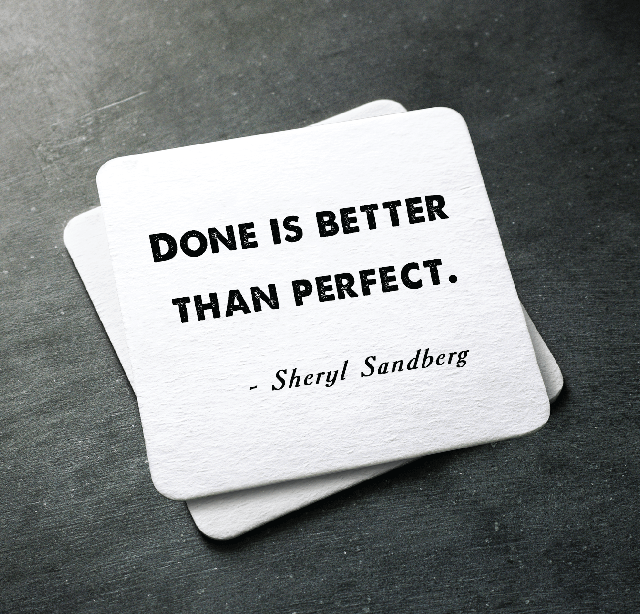Practical Advice For Conducting An Effective Training
You made a decision — you want to conduct an effective training session for your employees, students, or colleagues learn something you think is essential. You’ve made probably the most important decision. Now what? You might feel the paralyzing of anxiety getting over you. Where do I start? What do I do?
We get it — organizing good training isn’t easy. It takes both a lot of knowledge and some guts to make things work. You’ll need a nicely arranged classroom, effective training techniques, cool stationery, and a lot of confidence to make the experience less draining.
And though the success of the training session depends on many things, here is a list with practical tips you can use to make any training session work, regardless of how stressful and scary the process is.
1. Create a checklist before you start
Once you get into the preparation stage, it might be difficult to understand which steps are important and which are not. Before you get carried away by the process, prepare a checklist with all the things you might need for the training. A training session is not only about the lecture itself — it’s about the questions, equipment, and deliverables. By having a list, you can go over before preparing for the training, and after you’re done, you will keep yourself on track without having to stress out about it.
We don’t suggest over planning, especially on the initial stages — you never know what you might need at the end. But the checklist will help you make the preparation process a little less stressful. It will allow you to get in the state of flow when getting ready to share the knowledge with people. When you’re done preparing all you need to do is go over the list. It’s an effective training technique we learned a while ago and, need to admit, often use still.
2. Let people know what to expect
Keep the course of your actions a secret might be tempting. It might seem like the best way to keep people’s attention. But a training session is not a movie and leaving people wondering what the session is about and what they can expect from it will do more harm than good. That’s why announcing your agenda has proven to be one of the most effective training techniques.
Before you start the session, you need to get everyone on board. Make a quick overview of the upcoming presentation, distribute your handles, and answer questions if the audience seems to have any. It will make your presentation easier to follow if someone accidentally zooms out and will make them feel more comfortable.
Also, games and interactive activities are an important part of practical training sessions. But if you ‘surprise’ your audience with them, you will definitely to throw some people off. Unless that was the reaction you were going for, making people uncomfortable is hardly a good idea. By letting them know in advance, you will give them time to mentally and physically prepare. It will show that you care about the experiences they are having. We bet there’s no universe where it’s a bad thing.
3. Be in the moment – solve problems as they come
Getting nervous when conducting a training session is natural — especially if it’s one of your first ones. You might get so immersed into your plan that instead of responding to what’s going you end up just mentally ticking the boxes in your head. If during the training you feel that’s what is happening, take a breath and slow down. Remember that one of the most important reasons people prefer real-life training to their many online alternatives is human interactions. So, don’t be afraid to be human if you want to conduct a truly effective training,
Remember that no matter how stressed you feel, there isn’t a situation you cannot handle. No matter how hostile you think the environment is, the people would never object learning about something that would benefit them. Make them a focus and respond to the situation accordingly. Don’t panic if the public seems uninterested or overly enthusiastic. If they seem tired — take a small break and remind them about the things they will take away from the lecture. If they seem excessively energetic, thank them for their excitement and politely steer the conversation in the right direction.
4. Answer questions and encourage participation
You cannot always control the mood of the audience. It might seem frustrating, but to conduct effective training you don’t need to make everyone feel happy — you need to help them learn. So, instead of trying to manage what you cannot, try to focus on things are actually under in your power. So the best thing you can do is to make sure everyone is learning by encouraging participation. Always answer questions that come your way to the best of your ability and give further directions if they need it.
When planning the training account for the difference in personalities and do your best to show people who are a little shyer, they can feel comfortable. Advise the people who don’t mind being the center of attention use their confidence to engage other members. Yes, we also get, it’s not always possible to approach every single person in the training group no matter how big or small and give personalized feedback, but it should be your goal. Many effective training techniques take into account different learning styles. We think the one developed by David Kolb is probably amongst the best. His methods are simple but type in the essence of our learning process.
5. Make the impact of the training last
The most effective training is the one people learn from. Students, colleagues, employees that have attained the training should walk away from it feeling like they can apply what they have learned. They also need something that would not only remind them about the experience they had but also show others they are qualified enough to act.
That’s where certificates come in. The physical reminder will add more weight to their knowledge. But we get it — certificates are not always appropriate, but simple gifts or handmade items are. The way you end your training is just as important as the way you start it and what you say in-between. Make a strong statement that will only make them feel good about what has just happened.
Getting good at conducting effective training takes time
The more you do something, the better you get at it. Here is probably the best and most practical tip we can give — no matter what happens and how your first training session goes, don’t get discouraged. You can plan everything to the tiniest detail, and it will end up not going the way you wanted, and that’s ok. You are working with people, and people are unpredictable.
Take it as a learning experience, collect feedback, and think of the ways you can improve your next session. When conducting training, you are not only teaching others — you are learning too. The only ones who don’t fail are the ones who never try.


